Related Research Articles
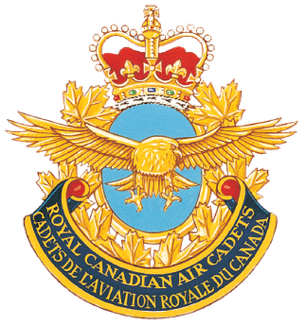
The Royal Canadian Air Cadets is a Canadian national youth program for young individuals aged 12 to 19. Under the authority of the National Defence Act, the program is administered by the Canadian Forces (CF) and funded through the Department of National Defence (DND). Additional support is provided by the civilian Air Cadet League of Canada (ACL). Together with the Royal Canadian Sea Cadets and Royal Canadian Army Cadets, it forms the "largest federally funded youth program in the country". Cadets are not members of the military and are not obliged to join the Canadian Forces.
The Glider Pilot, Liaison Pilot, and Service Pilot badges were qualification badges of the United States Army Air Forces issued during the years of World War II to identify a rating in one of three specialized, limited-duty pilot categories whose selection and training differed from that of the traditional military pilot.

The Air Force Reserve Officer Training Corps (AFROTC) is one of the three primary commissioning sources for officers in the United States Air Force and United States Space Force, the other two being the United States Air Force Academy (USAFA) and Air Force Officer Training School (OTS). A subordinate command of the Air University within the Air Education and Training Command (AETC), AFROTC is aligned under the Jeanne M. Holm Center for Officer Accessions and Citizen Development at Maxwell AFB, Alabama. The Holm Center, formerly known as the Air Force Officer Accession and Training Schools (AFOATS), retains direct responsibility for both AFROTC and OTS.

Air Education and Training Command (AETC) is one of the nine Major Commands (MAJCOM) of the United States Air Force (USAF), reporting to Headquarters, United States Air Force. It was established 1 July 1993, with the realignment of Air Training Command and Air University.
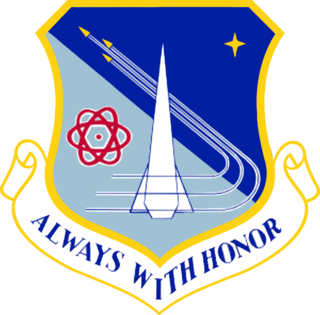
Officer Training School (OTS) is a United States Air Force and United States Space Force commissioning program located at Maxwell Air Force Base in Montgomery, Alabama.

Mather Air Force Base was a United States Air Force Base, which was closed in 1993 pursuant to a post-Cold War BRAC decision. It was located 12 miles (19 km) east of Sacramento, on the south side of U.S. Route 50 in Sacramento County, California. Mather Field was one of 32 Air Service training camps established after the United States entry into World War I in April 1917.

The National Test Pilot School (NTPS) is the only civilian test-pilot school in the United States, located in Mojave, California. It is organized as a not-for-profit educational institute under California state law and is governed by a board of trustees. NTPS is one of the seven test-pilot schools worldwide recognized by the international Society of Experimental Test Pilots, giving pilot graduates of NTPS instant initial acceptance into their society. In 2016, NTPS became the first test-pilot school in the world to be certified as a Flight Test Authorised Training Organisation by the European Aviation Safety Organization.
Minnesota Wing, Civil Air Patrol (MNWG) is one of 52 Wings of Civil Air Patrol and helps fulfill Civil Air Patrol's core missions in Aerospace Education, Cadet Programs, and Emergency Services.

Civil Air Patrol (CAP) is a congressionally chartered, federally supported non-profit corporation that serves as the official civilian auxiliary of the United States Air Force (USAF). CAP is a volunteer organization with an aviation-minded membership that includes members from all backgrounds. The program is established as an organization by Title 10 of the United States Code and its purposes defined by Title 36.

Ellington Field Joint Reserve Base is a joint installation shared by various active component and reserve component military units, as well as aircraft flight operations of the National Aeronautics and Space Administration (NASA) under the aegis of the nearby Johnson Space Center. The host wing for the installation is the Texas Air National Guard's 147th Attack Wing. Opened in 1917, Ellington Field was one of thirty-two Air Service training camps established after the United States entry into World War I. It is named for First Lieutenant Eric Ellington, a U.S. Army aviator who was killed in a plane crash in San Diego, California in 1913.
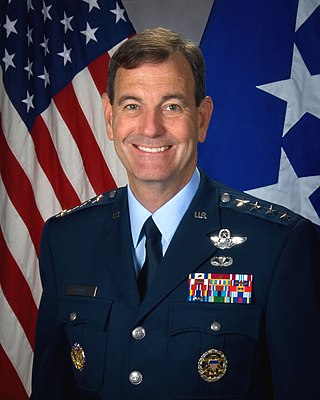
Stephen Randolph Lorenz, is a retired United States Air Force four-star general who currently serves as president and chief executive officer of the United States Air Force Academy Endowment. His last military assignment was as the 29th Commander, Air Education and Training Command (AETC), Randolph Air Force Base, Texas. As commander, he was responsible for the recruiting, training and education of all US Airmen. His command included the Air Force Recruiting Service, two numbered air forces and Air University. Air Education and Training Command consists of 13 bases, more than 92,000 active duty, reserve, guard, civilians and contractors, and 1,750 trainer, fighter and mobility aircraft.

The United States Army Air Forces during World War II had major subordinate Commands below the Air Staff level. These Commands were organized along functional missions. One such Command was the Flying Training Command (FTC). It began as Air Corps Flying Training Command on 23 January 1942, was redesignated Army Air Forces Flying Training Command (AAFTC) on 15 March 1942, and merged with Army Air Forces Technical Training Command to become Army Air Forces Training Command on 31 July 1943. Continuing service after the war, it was redesignated Air Training Command on 1 July 1946. During the consolidation of Air Force Major Commands in the retrenchment of the 1990s, Air Training Command assumed control of Air University and became Air Education and Training Command on 1 July 1993—today's Air Education and Training Command (AETC), which celebrated its 75th anniversary 23 January 2017. see the Lineage and honors statement for AETC.
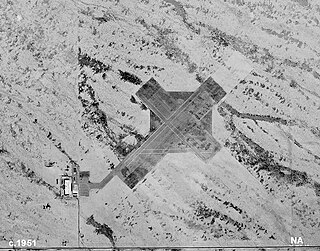
Echeverria Field is an abandoned airfield, located approximately 15 miles (24 km) west of Wickenburg, Arizona.

During World War II civilian flying schools, under government contract, provided a considerable part of the flying training effort undertaken by the United States Army Air Forces.

The Brazilian Air Force Academy is the Brazilian Air Force's educational institution that provides initial officer training for the main Officer Board of Brazil's Air Force Command. The academy is located east of Pirassununga city, in São Paulo State county, and it is the largest Brazilian Air Base as well as the largest Air Force Academy of Latin America. All three Officer Formation Courses (CFOs) of Academia da Força Aérea are recognized as Superior Degree by Brazil's Ministry of Educations.

The Georgia Wing is a subdivision of the Civil Air Patrol which oversees its operations in Georgia. They provide emergency services, aerospace education, and cadet programs within the state. Georgia Wing headquarters are located at Dobbins Air Reserve Base in Marietta, Georgia. Georgia Wing is abbreviated as "GAWG", and is often referred to by its members as "GA-Wing".

The New Mexico Wing Civil Air Patrol (CAP) is the highest echelon of Civil Air Patrol in the state of New Mexico. Its headquarters is located at Kirtland AFB, and the wing is under the command of Col Annette R. Peters.

Florida WingCivil Air Patrol (CAP) is part of Southeast Region (SER) and the highest echelon of Civil Air Patrol in the state of Florida. Florida Wing headquarters is on the Sun n Fun campus located at Lakeland Linder International Airport in Lakeland, Florida. Florida Wing consists of over 3,500 cadet and adult members at over 66 locations across the state of Florida. Col Luis Negron assumed command from Col Luis Garcia on July 24, 2021 at the Florida Wing Conference in Tampa, Florida.
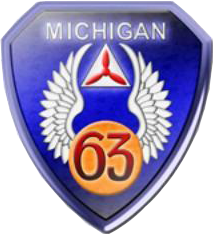
The Michigan Wing of Civil Air Patrol (CAP) is the highest echelon of Civil Air Patrol in the state of Michigan. Michigan Wing headquarters are located in Selfridge Air National Guard Base. The Michigan Wing consists of over 1,200 cadet and adult members at over 42 locations across the state of Michigan.
Members of Civil Air Patrol are assigned various ranks, the titles and insignia of which are based on those used by the United States Air Force. Each grade and insignia corresponds to an equivalent United States Air Force enlisted rank insignia and an equivalent officer rank insignia.
References
| This article incorporates material produced by the Civil Air Patrol. As a work of the U.S. federal government, the material is in the public domain . |